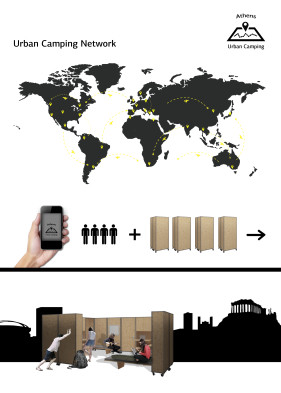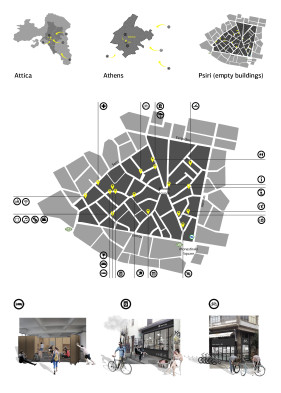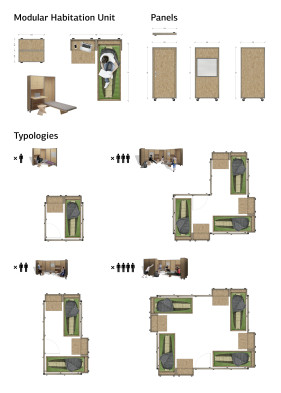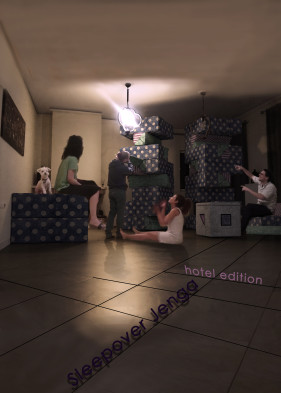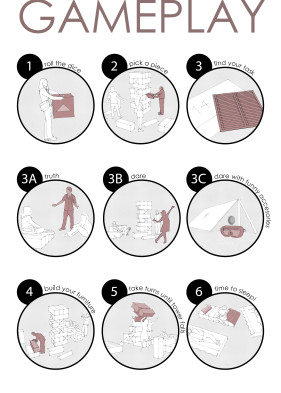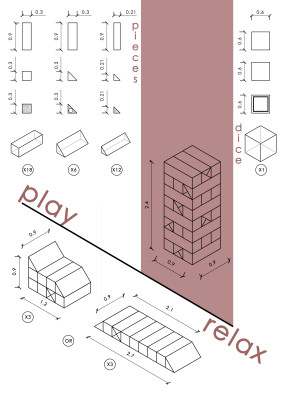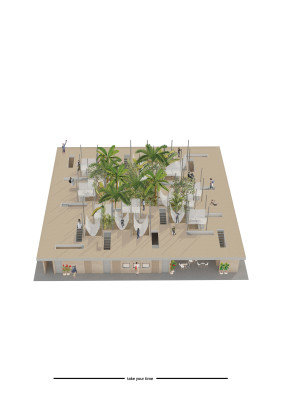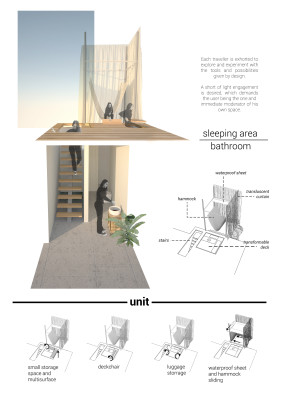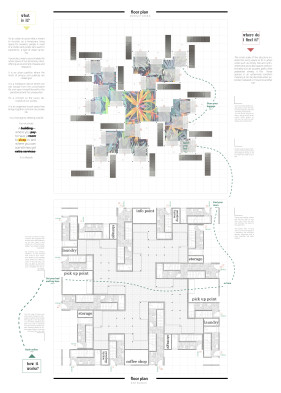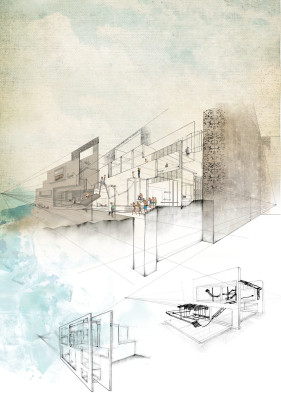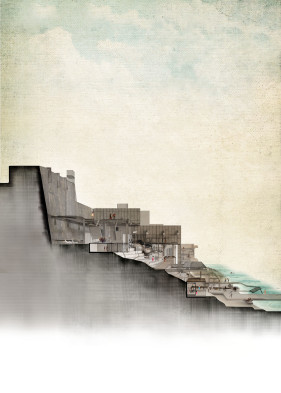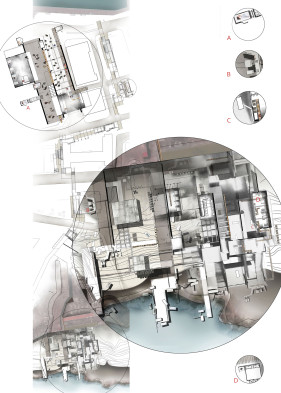TEAM: Violeta Bampatzia
An alternative approach to City Tourism.
A modern tourist trend that is constantly evolving is Urban Tourism, otherwise known as City Break.
Thus, expanding the tendency of the City Break and based on the need for alternative economic habitation and exploration of the city centers, the idea of the Urban Camping Network is developed.
The concept of the Urban Camping Network is organized around: a) an internet based platform, b) the reuse of the abandoned or empty buildings in the city centers c) the user friendly production technique of transferable habitation units which will be accommodated in the buildings above and d) the provision of additional activities.
Its design is based largely on the way of the classic outdoor camping and is also adapted to the needs and possibilities of the urban environment and the requirements of the urban tourism model. It provides an alternative way of temporary residence in structured tissue of the city, promoting collegiality and interaction of visitors, both among themselves and with local residents.
Urban camping is not limited to the provision of spaces for overnight stay but also for work and other activities, thus creating a functional network of routes and activities through the urban network (as illustrated in the functional image).
Selected as settlement locations can be abandoned buildings or empty structural shells, capable of hosting the habitation unit of the visitor and the additional activities provided by urban camping.
The area of Psiri in the city of Athens, has been selected as an indicative location for Urban Camping, due to its historical background and its location at the city center. (as illustrated on the maps of functional image).
In regards to the overnight stay of the visitors, a folding, easily movable and transformable habitation unit is provided, which offers the amenities necessary for accommodation, such as sleeping area, workspace and storage space for personal belongings of the visitors.
Contrary to open-air camping, visitors are not required to bring all the required equipment for their accommodation, but only whatever they deem necessary to facilitate their accommodation (e.g., sleeping bag). This greatly facilitates the transportation of visitors to and from the city.
Other than the basic habitation unit, additional panels can be offered for multiple purposes, for example used as doors, windows or walls. These panels connect habitation units to each other, creating different typologies of space able to accommodate from up to four persons, (as illustrated in the technical image).
The creation of the Urban Camping could potentially spread to more cities, both in Greece and abroad, thus creating a network of urban tourism.
The future Urban Camping visitor, during the trip planning process, can be connected to the web application, choose the city which he wants to visit and the location to install the habitation unit. Upon his visit at the urban camping, the visitor receives the reserved habitation unit, integrates it in the selected area and makes himself part of the daily reality of the city. (as illustrated in the presentation image).












